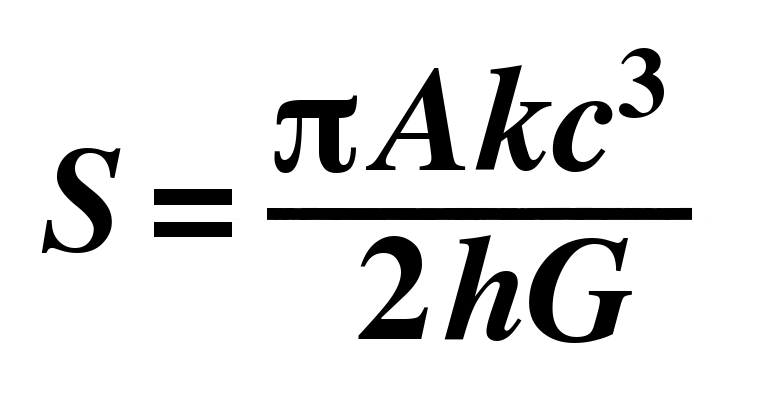



Famed scientist Stephen Hawking who died on Wednesday at an age of 76, had already decided what he wanted to be carved on his gravestone.
In 2002, on the occasion of his 60th birthday, he had expressed his desire to have the Hawking’s equation on his tombstone. The equation is one of his most famous and seminal work which explains the concept of Hawking radiation.
Along with Jacob Bekenstein, he postulated that a black hole is not just black and pulls everything but also emits sub-atomic particles known as Hawking radiation.
The equation, as shown below, neatly expresses the above idea.

The S in the equation serves to calculate and signify entropy—a measurement of randomness and disorder in any given area. π is a constant which is originally described as the ratio of circumference and diameter of any circle, A is the given area, k is Boltzmann constant which signifies a relation between heat (or, temperature) and energy. c is another constant which is the speed of light.
In the denominator, h signifies Planck’s constant, an important concept in quantum mechanics which relates energy and frequency of a sub-atomic particle. G is the gravitational constant determined by Isaac Newton and used extensively whenever celestial bodies of significant masses are involved.
The formula is a breakthrough as it was the first such work which unified quantum mechanics (theory of very small, i.e., atoms) and general relativity (theory of very large, i.e., planets and stuff).
In the memoir, My Brief History, Hawkins recounts how he arrived at the formula.
“In particular, I wondered, can one have atoms in which the nucleus is a tiny primordial black hole, formed in the early universe?”
“To answer this, I studied how quantum fields would scatter off a black hole. I was expecting that part of an incident wave would be absorbed, and the remainder scattered.
“But to my great surprise, I found there seemed to be emission from the black hole. At first, I thought this must be a mistake in my calculation. But what persuaded me that it was real, was that the emission was exactly what was required to identify the area of the horizon with the entropy of a black hole.”
“I would like this simple formula to be on my tombstone,” he added.
Discover the latest Business News, Sensex, and Nifty updates. Obtain Personal Finance insights, tax queries, and expert opinions on Moneycontrol or download the Moneycontrol App to stay updated!